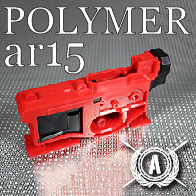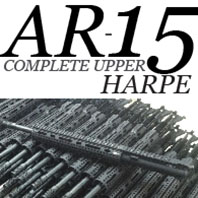Unplugged: Former ATF Agent Daniel O’Kelly
#FightAmmoBan
Having fun or fighting, time flies. It was one year ago the ATF executed a search warrant, and a raid on Ares Armor locations. Their claim was an investigation into federal firearm violations.
To Ares Armor Founder, Dimitrios Karras, the agents in San Diego County looked similar to scenes from his 8 years as a member of the U.S. Marine Corps. “They came into our manufacturing facility with their guns up like they were invading Iraq,” he said at the time.
The March 2014 ATF raid confiscated computers, massive customer lists, and 80% polymer lower receivers. The battle between Ares Armor and the Bureau of Alcohol, Tobacco, Firearms, and Explosives included shots heard across the country. The legal case landed in U.S. District Court in the Southern District in California.
Daniel O’Kelly, former ATF Agent and world-recognized firearm and ammunition expert, followed the story from his International Firearm Specialist Academy office near Dallas, Texas. He never thought the fight would come to his door.
“I saw what was happening,” said O’Kelly, who spent 23 years in the ATF as an Agent and supervisor. “I said to myself it was just another guy going through the legal system.”
6 Months later, the court-certified expert witness of 25 years, got a call from attorney Scott McMillan. He was asked to render an expert opinion for a case as to whether an item would hold up in court as a firearm. Little did O’Kelly know it involved Ares Armor.
In November 2014, the former ATF Agent submitted a written declaration to Judge, Honorable Janis L. Sammartino. In it, Daniel O’Kelly took a stand for the truth, the 2nd Amendment, and Ares Armor, and against his former employer:
I have arrived at the following opinions summarized as follows:
- The 5804 items at issue are not “firearms” as defined in 18 U.S. C. Section 921 (a) (3).
- The 5804 items at issue are not a “firearm frame or receiver” as defined in 27 CFR subsection 478.11, which defines a “frame or receiver” as “that part of a firearm which provides housing for the hammer, bolt or breechblock and firing mechanism, and which is usually threaded at its forward portion to receive the barrel.” Assuming for the sake of discussion, even if that unfinished lower receiver had been finished to the state known in the Firearms Industry as a “stripped AR-15 receiver”, that “finished” receiver still would not satisfy the elements of a “receiver” as defined in 27 CFR subsection 478.11, which defines a “frame or receiver” as “that part of a firearm which provides housing for the hammer, bolt or breechblock, and firing mechanism, and which is usually threaded at its forward portion to receive the barrel.”
- The 5804 items at issue are not “a frame or receiver,” even without reference to that definition of a receiver set forth in 27 CFR subsection 478.11, and wholly relying on the standards which the ATF has published in prior determination letters, the subject unfinished receiver is an “unfinished” blank based on the criteria relied upon in prior determinations.
- The 5804 items at issue are not contraband.
“What they took are known in the industry as 80% blanks”, said O’Kelly. “By the way, the 80% figure is never used by ATF. Unfinished receivers always decided on a case by case basis. The Ares Armor blanks absolutely do not hold up to ATF’s own definition of a firearm receiver. They also don’t hold up for other reasons, such as the “indexing” issue. The so-called “biscuit” area on the inside which they called indexing, is not the right size, and indexing was not the purpose for making it. Also, the indexing issue was also already shot down by the Judge in a federal court. As a matter of fact, the definition of a receiver requires an item to have at least three features. Those being, a housing for the hammer, a housing for the bolt or breechblock, and a housing for the firing mechanism. Even a complete AR15 frame doesn’t have all three.”
Today, Daniel O’Kelly holds the courage and integrity to stand with the law and the truth against ATF members like one in the Ares Armor case. “A particular agent said in his affidavit that AR-15 receivers are the same thing as M-16 machine gun receivers,” said O’Kelly. “That is not true. Even if the receiver blanks at issue were completely finished, there’s a difference both legally and physically, between AR15 receivers and M-16 receivers.”
No one at Ares Armor is celebrating the first anniversary of the ATF raid. But because of it, and the currently proposed ammo ban, it seemed timely to share how even a former ATF insider is calling out the bureau’s bad practices.
All of us, Mr. O’Kelly, certain law enforcement leaders, (and ultimately the federal courts) will shoot down the stretching of firearm and ammunition definitions and facts, for exactly what it is…wrong, illegal, and unconstitutional.
Even some bad apples in the ATF, can’t overcome the core of the truth on “armor-piercing ammunition”:
By definition, the M855 bullet, and even its core, is NOT “constructed entirely from one or a combination of tungsten alloys, steel, iron, brass, bronze, beryllium copper, or depleted uranium;”
The M855 bullet and its core, are only partially made of steel. Therefore, calling it “armor-piercing ammunition” does not apply.
Share your voice using this hashtag in social media:
#FightAmmoBan








